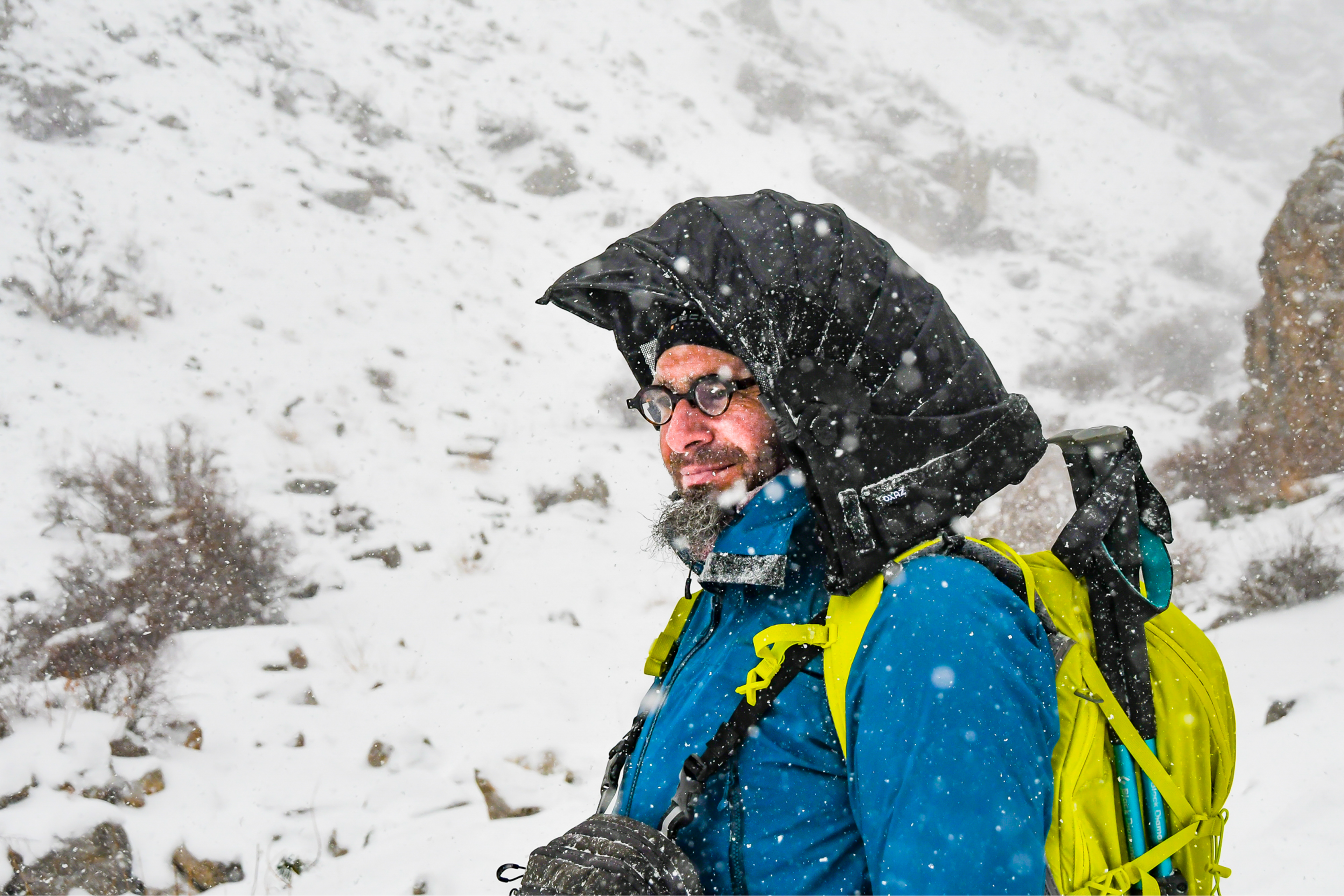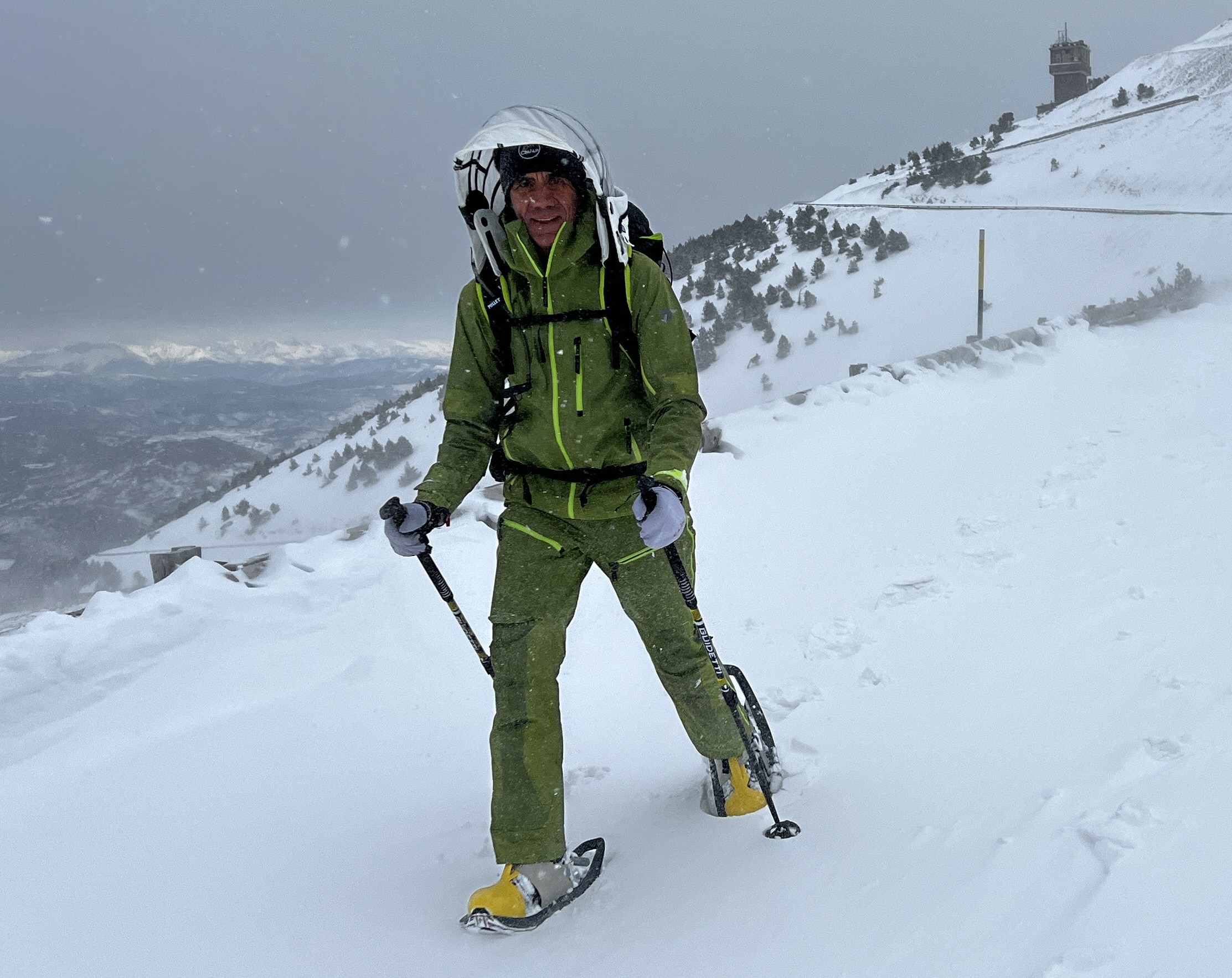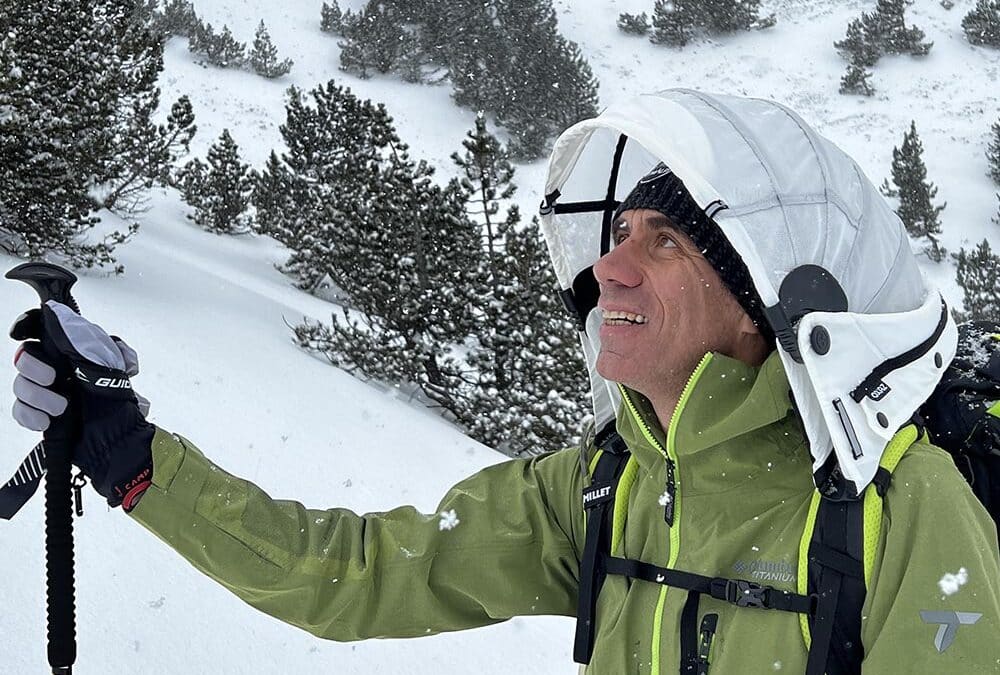The drop in temperature in winter has a strong impact on our comfort, so how to face the cold when hiking in the snow?
What equipment should you wear to resist the cold without feeling “suffocated”? How to protect your head under a snow storm?
Snowshoeing
For those who think that snowshoeing is a difficult activity, rest assured: it is only an extension of summer hiking. So if you can walk in the summer, you’ll know how to walk in the winter! Thanks to their wasp-waist shape the snowhoes are designed to adapt to the natural movement of the walker, so you can easily discover the snow and the winter mountains.
More practical than skis, snowshoes allow us to sneak more easily between the trees and on hard-to-reach trails. The advantage of snowshoes? They don’t require any special facilities and everyone can do it, young and old alike! It’s a great activity to do with family or friends.
To discover easy to handle French snowshoes, click here.

How to face the cold when hiking in the snow?
It may seem complicated to find solutions to resist the cold. But you should know that it is possible to fight against the cold more effectively thanks to specific clothing offering optimal protection. Hiking in winter is no more unpleasant than hiking in summer.
But then, how to face the cold?

We know the solutions, we will explain them to you
At Oxaz we are hiking enthusiasts and the weather is not going to stop us! Whether it’s hot, cold, rain or snow, we can’t do without the mountain air even during this period of extreme cold with temperatures that can reach -10°C. But to enjoy a good hike in this cold you need some tips.
So here are our tips to face the cold!
Protect your upper body
The three-layer rule (or “onion strategy”) is well known and is essential to face the cold. A first layer that stays warm even when wet. A second insulating and breathable layer, in fleece or equivalent, to guarantee even more warmth. Then a third layer that is waterproof, windproof (also snowproof) and breathable to protect against the elements. To discover a fleece garment that will properly protect you from the cold, click here!
For a reminder of the 3-layer rule and to face the cold, click on this link.
Of course, depending on the effort and the temperature variation during the day, you will be more or less warm. The “onion strategy”, where you are free to remove or add layers as you wish, is the right strategy. So when you have to face the cold you can add more clothes! To learn more, click on this link.
Protecting the legs
There are winter hiking pants available in all outdoor stores but you can also opt for mountain pants that will be suitable for walking. To discover a REAL mountain pant to face the cold, click here!
Protect your feet
For shoes, the choice is very important, we advise you to choose membrane and semi-mounted models, in particular to face the snow but also for the muddy grounds. And don’t forget the socks to face the cold!
And what about the head? That’s where it gets a bit tricky…
How to protect your head?
It is through the head that the body loses more than 80% of its heat. So the use of a headgear in winter is very important! It’s hard to find a true protection to protect the head and to face the cold. An ordinary hood? A beanie? A hat? These accessories are sometimes practical, sometimes comfortable. But as we will see below, they are rarely practical AND comfortable and they do not offer optimal protection.

The hat, the cap
• The cap and hat provide effective protection from the sun’s rays, except for the neck and ears.
• They do not protect against the cold because their thin fabric is not a good thermal insulator.
• In high winds, the cap or hat is not resistant and can fly away easily.
The umbrella
• When it rains, the umbrella is a useful tool! It allows us to protect ourselves and to walk dry.
• In the sun, it also protects from the sun’s rays. In the same family, we find the sun umbrella, which is frequently used in the sun.
• Bulky, not practical if we need our two hands.
• Too much windage, it is not designed to withstand gusts of wind.
The beanie
• With its wool, it allows us to face the cold.
• It protects the head and ears from the cold, and can be worn in everyday life.
• Overheating, the beanie will make us sweat. For a sporting practice, a polar material is advised.
The hood of clothing
- Useful, to face an unexpected downpour.
- Not comfortable, an ordinary hood will tend to imprison your head or stick to your face.
- In a rain shower, your usual hood won’t protect your glasses.
- In the wind, it doesn’t stay in place, unless you squeeze it hard on your head, which is unpleasant.
- No ventilation, the fabric of ordinary hoods touches your head and it is not ventilated because it is in an enclosed space.
- Noisy, the fabric rubbing against your ears prevents you from hearing the sounds of nature.
Want to protect your head more effectively against the cold when hiking in the snow? Try Overcap!

@loury_photography
The Overcap protects you better
The Overcap is the first semi-rigid protection for all weather conditions. It will protect you effectively during your winter hikes. Thanks to it you will be ready to face the cold.
During a snowshoe walk, the Overcap hood will maintain an insulating and ventilated air space around your head so that you are not oppressed. This way, your head, neck and ears are comfortably sheltered. Say goodbye to the cold and hello to winter hiking in the snow.
But not only in the snow! Overcap protects you when the weather gets bad: frequent downpours, long rains or very strong winds.
• The head free to move and well ventilated: made of thin frames, Overcap does not touch your head.
• Resistant to strong winds: up to 80 km/h from the side as well as from the front, without any “wind grabbing” effect.
• Protects from the sun with a well-ventilated head.
• Protects from rain with its waterproof fabric.
• Protects from snow showers.
Honestly, do you know another head protection which is adapted to all weather conditions? Click here to find out more.

In conclusion, the practice of snowshoeing is becoming increasingly popular. But in order to enjoy the nature and to face the cold, it is necessary to know how to equip yourself correctly. We hope that our advices has helped you to see more clearly and to make your choices. Adapting your clothing to the weather and equipping yourself with the right accessories will allow you to enjoy nature whatever the weather!

